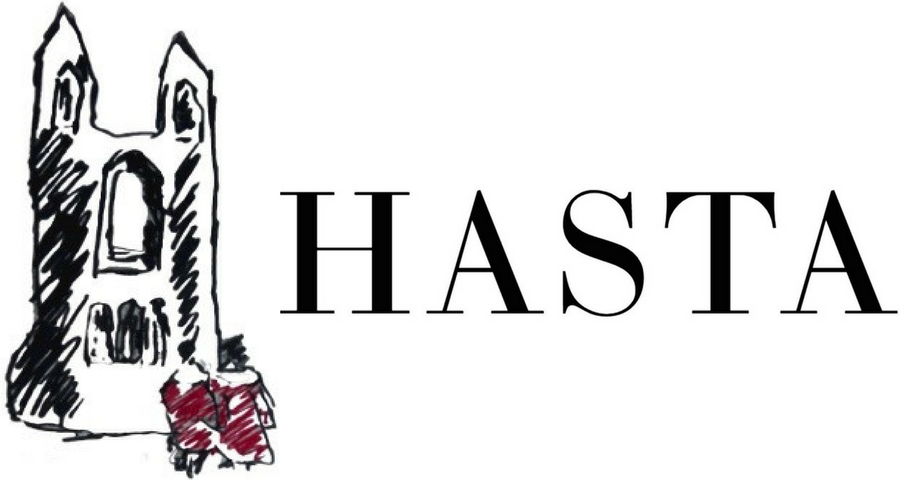George Segal, 1924-2000
By Toby Berryman
Abraham’s Farewell to Ishmael, 1987, painted plaster, 107 x 54 x 54 inches, Collection Pérez Art Museum Miami, gift of The George and Helen Segal Foundation
Barely ninety years after “slanderous suspicions” of surmoulage (casting from a life-model) threatened to derail the career of Auguste Rodin, the ‘father of modern sculpture’, it was instead this very practice that propelled George Segal – a New Jersey poultry farmer, amateur Expressionist, and high-school English teacher – to artistic success and a career at the true forefront of the flourishing Pop Art movement. At fifty, Segal had featured in the artistic-filmmaking of John Lennon/Yoko Ono (alongside last month’s BTW-subject Peter Max, no less), delivered innumerable vast public-commissions, and welcomed the great and good of the New York artworld to his legendary farmhouse; but such prestige was not something he had always enjoyed.
Born to the proprietors of a humble Bronx butcher’s-shop exactly one hundred years ago today, Segal’s upbringing was blighted by inter-war economic hardship, and when, at the age of fourteen, war was declared once again, he swapped education for labour through supporting his parents’ chicken farming, a practice which he later decried as “legalised slavery”. Fortunately, however, Segal’s longstanding interest in art was not dampened by these struggles. Rather, the intense humanism which defines his subject, borne out in harrowing work such as Depression Bread Line, 1991, undoubtedly derived from such lived-experience.
After the war, Segal continued his studies, married his childhood-sweetheart, purchased his own farm, and began to learn under the acclaimed abstract-expressionist Hans Hofmann. Yet, as perfect as this all might appear, his artistry struggled amidst a longing, instead, for both the figurative and the sensual, desperate for “things [he] could touch”. Hence, in a 1961 classroom, his career changed drastically within a single day.
A student, burdened with dry-plaster bandages, offered some to the experimental-sculptor Segal and, thereby, the medium which would define his artistic career (and legacy) was born. The art of casting was not without its difficulties, though, and Segal himself suffered burns and lost body-hair when he first attempted to mould the heated plaster to his skin, producing Man Sitting at a Table, 1961. That said, following a careful re-assessment of the artistic process, a great many commissions were to follow, and his markedly humanist, deeply emotional works, distinguished by the self-confessed “ugly” normality of his peer-models at a time of consumerist perfectionism, were remarkably well-received. Compositions public and private, indoor and out, then ensued as Segal embarked upon a prolific career that veered stylistically only minimally (most considerably in his exploration of painted-bronze for posterity) from his initial fabled after-school effort.
The Holocaust, 1981-1984, whitened bronze, installation view, Holocaust Memorial at California Palace of the Legion of Honour, Lincoln Park, San Fransisco
Segal’s novel practice was not without cultural-firsts either. He provided the first public sculpture dedicated to LGBT rights, Gay Liberation, 1980, whilst the very first of Allan Kaprow’s famed ‘happenings’ occurred at Segal’s farm in 1963: a growing artistic hub reminiscent of New York City’s ‘10th Street Scene’ that Segal had joined while at NYU. There was, however, considerable variation to Segal’s artistic-themes, from the traditionalist biblical inspiration of his haunting memorial for the Kent State Shootings titled Abraham’s Farewell to Ishmael, 1987, to the embodied supposed-simplicity of works like Three Figures and Four Benches, 1979 which instead invites a direct physical engagement. That said, Segal’s most celebrated works remain those intended explicitly for memorial or commemoration, from the especially haunting The Holocaust, 1981-1984, to his tripartite composition at the Franklin Delano Roosevelt Memorial, 1997, indicative of the emotional resonance of the eerie, yet timeless full-scale figures that populate his often loosely-defined sculptural plane. Some painted vibrantly, others reduced to a few limbs, Segal also crafted an ‘assembled environment’ for his figures, somewhere between a Duchamp-ian readymade and the hyperrealist sculptures of Duane Hanson, regardless an enduring token of the sometimes-brutal reality he sought to display.
Towards his late-career, buoyed by the work of his studio assistant Donald Lokuta, Segal experimented with black-and-white still photography, undoubtedly reminiscent of the monochromatic character of his sculptural-work. Despite his untimely death from cancer in 2000, the artistic legacy, and also embodied presence, of George Segal lives on throughout the globe, as the primary-sitter for many of his most-seen and best-known public artworks.
Bibliography
“Artist – George Segal”. Guggenheim New York. https://www.guggenheim.org/artwork/artist/george-segal.
“Biography”. The George and Helen Segal Foundation. https://segalfoundation.org/biography.
Edwards, Amber, (director). George Segal: American Still Life. The Public Broadcasting Service (PBS), 2001. 57 minutes.
Lokuta, Donald. “George Segal: Recollections of the Artist and His Photography”. The Princeton University Library Chronicle 71, No. 3 (Spring 2010): 393-423.
Princeton University Library. The George Segal Papers – Archive. Princeton University, Princeton, New Jersey.
Segal, George, Adams, Doug and Dillenberger, Jane Daggett. “Insights into Abraham’s Farewell to Ishmael: An Interview with George Segal”. ARTS 5, No. 1 (Fall 1992): 28-32.
Segal, George and Berger, Danny. “George Segal: An Interview”. The Print Collector’s Newsletter 18, No. 3 (July-August 1987): 91-94.
Smith, Roberta. “George Segal, Pop Sculptor, Dies at 75; Moulded Plaster People of a Ghostly Angst”. New York Times, National Edition. June 10, 2000. https://www.nytimes.com/2000/06/10/arts/george-segal-pop-sculptor-dies-at-75-molded-plaster-people-of-a-ghostly-angst.html.
Yoskowitz, Robert. “A Cast of One: Modelling for George Segal”. The Princeton University Library Chronicle 71, No. 3 (Spring 2010): 451-457.


